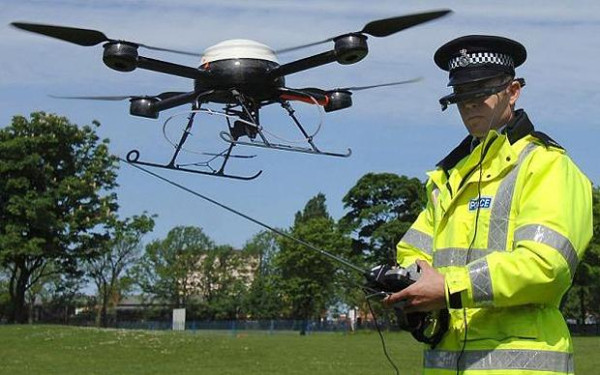PHOTO: Police officers in Dallas, Texas, where 12 colleagues were shot by a sniper last week
David Hastings Dunn of the University of Birmingham writes for The Conversation:
Technology makes us capable of things that were previously impossible, such as rapid travel by car or aircraft, or sending messages around the world in an instant. But often technology also changes the way we do those things of which we are already capable, such as the use of remotely-controlled aerial drones to launch strikes in Afghanistan and Pakistan.
The argument that delivering destruction by remote control changes the rules of the game is directed at police following last week’s shootings in events in Dallas, Texas. When sniper Micah Johnson holed himself up in a building, having killed five police officers and wounded seven, the Dallas Police ended the stand-off by killing Johnson with an explosive delivered by a remote-controlled robot, usually used to detonate suspect packages or bombs.
Bomb-by-remote-control raises the question of imminent threat. Critics of drone strikes argue that their surveillance capability leads to many more deaths than would be justified by a strict interpretation of “imminent threats”. This is especially true where “signature strikes” are carried out – those based on the target’s “pattern of life activity”, rather than clear knowledge of the target’s identity, actions, or even motivations. Critics argue that this technology makes “targeted killing” a method that is chosen too easily: the lack of accountability of the machine algorithms chewing through surveillance data and recommending action means there is no impediment to their escalating use.

Policeman in northwest England tests a remote-controlled helicopter (John Giles/PA Wire)
3 Issues to Address
For police officers in Dallas, it was clear from his communications that Johnson had no intention of surrendering. He had shot 12 of their colleagues and was adopting “shoot and move” tactics, learned from his time in the US Army, to confuse and evade capture. Under such circumstances, police concluded that any means to take out Johnson was justified. But to other observers, Johnson’s hiding behind a wall – not shooting or directly threatening police – when the bomb-disposal robot detonated its explosives meant the police’s decision could be summary justice. This raises three issues.
First, did Johnson pose an imminent threat to others when attacked? As far as the police were concerned, it was better to target him while inactive than to wait to engage him when he started a fresh volley of shots. Given the scale of the wounding and killing Johnson had already accomplished, this is a powerful argument.
Second, if they were able to get close to him with a robot, could they not have tried to incapacitate him with a taser, chemical spray or gas, or tranquilizer dart? Using a robot to do so would make this as risk-free to officers as killing Johnson with explosives.
Third, is the precedent of the police’s actions. While the killing was carried out using the fairly old technology of a tracked bomb-disposal robot, albeit in a novel way, it raises the issue of the rules of engagement for armed drones or other remote-control weapons.
Firefighters are already experimenting with small drones that can search burning buildings for bodies to rescue using infrared cameras. It’s only a short step from here to police using the same devices to look for persons of interest. In the UK, drones are already used by the National Crime Agency to see behind buildings and walls and to carry out surveillance on suspects. In these cases, if the suspects were planning to plant a bomb or launch an attack, would the police be justified in using an armed drone to pre-emptively stop them – delivering death by remote control? At what point do we relinquish the idea that the police are there to bring suspects to justice in a court of their peers, and move instead towards a military-style approach of defense through use of force – if necessary, pre-emptive force?
The potential use of drones, particularly as they become smaller, for crime or terrorist purposes is of great concern. How we are to counter these potential threats, and to respond in general to these early iterations of the robotic revolution, is up for debate. The events in Dallas are but the first chapter of a controversy that has only just begun.
![]()

